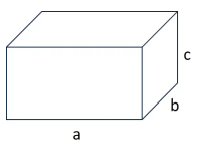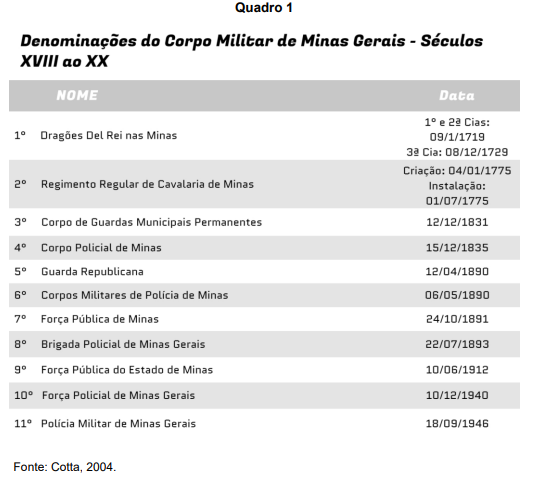Questões Militares
Comentadas para pm-mg
Foram encontradas 3.097 questões
Resolva questões gratuitamente!
Junte-se a mais de 4 milhões de concurseiros!
Sabe-se que a soma dos n primeiros termos de uma progressão geométrica (an) de razão q ≠ 1 é:

Onde q é a razão da progressão, a1 o primeiro termo e n a quantidade de termos.
Quantos policiais militares músicos serão contratados no período de 2024 a 2033?
Abaixo está a tabela com a quantidade de cada tipo de ocorrência atendida por batalhão e o tempo total de permanência na delegacia por todas as viaturas do Batalhão em determinado dia.

Sabendo que o tempo de permanência na delegacia é igual para o atendimento de cada ocorrência do mesmo tipo de policiamento, marque a alternativa CORRETA que contém, respectivamente, o tempo, em minutos, de permanência na delegacia para as modalidades de policiamento POG, PMAMB, PATRAN e PPVD.


Ao atingir a maior idade, Beltrano se direcionou a realizar um sonho cultivado desde a infância: realizar concurso público e se tornar oficial do Exército Brasileiro.
Considerando o caso apresentado e tendo em vista os aspectos da nacionalidade, insculpidos no art. 12 da Constituição Federal de 1988, assinale a alternativa CORRETA:
I. O texto menciona preocupações relativas à privacidade e à discriminação como fatores complicadores na adoção da tecnologia pela polícia.
II. De acordo com o texto, as tecnologias emergentes estão a fomentar uma escalada na incidência de atividades criminosas.
III. Os leitores de placa, entre outras tecnologias, são mencionados no texto como ferramentas que auxiliam a polícia na redução de ferimentos e lesões corporais.
IV. O texto menciona que o Departamento de Polícia de Houston aumentou o seu efetivo para enfrentar os desafios impostos pela tecnologia.
De acordo com o texto I, está CORRETO afirmar que:

( ) A palavra “Republicana" é formada por um processo de derivação parassintética. Ela deriva do substantivo “público” pela adição do prefixo “Re-” e do sufixo “-ana”.
( ) O acento gráfico na palavra “Polícia” se justifica por ser uma paroxítona com ditongo crescente.
( ) Em “Corpo de Guardas Municipais Permanentes”, a palavra “permanentes” exerce função de um adjetivo.
( ) Na palavra “Dragões” em Dragões Del Rei nas Minas predomina a figura de linguagem denominada “Prosopopeia”.
Marque a alternativa que contém a sequência de respostas CORRETAS, na ordem de cima para baixo:
( ) O crime de responsabilidade que atente contra o exercício dos direitos políticos, individuais e sociais, se caracteriza, também, por incitar militares à desobediência à lei ou infração à disciplina e é permitido ser denunciado por qualquer cidadão perante a Câmara dos Deputados, sendo sua pronúncia realizada nesta respectiva casa, caso o autor seja o Presidente da República.
( ) No estatuto da criança e adolescente, existe a previsão de imputação de crime a quem intermedia a participação nas cenas de produção de pornografia envolvendo a criança e adolescente, a diferença está no fato de que para criança há uma previsão de qualificadora em caso do crime ter sido praticado pelo agente no exercício do cargo ou função pública ou a pretexto de exercê-la, enquanto para o adolescente há uma previsão de majorante.
( ) A prática de crime de homicídio cometido para assegurar a ocultação de outro crime, quando praticado pelo Policial Militar de serviço, não pode ser considerado hediondo por falta previsão legal expressa, somente seria possível se praticado pelo militar de folga e não ter se colocando em serviço, conforme previsão art. 121 V do CP.
( ) A prática de atos de improbidade administrativa prevê ato doloso e com fim ilícito, o que significa que o mero exercício da função pelo agente afasta a responsabilidade, ou seja, o dolo deve ser consciente de alcançar o resultado ilícito. Cita-se como por exemplo o agente público que receber vantagem econômica de qualquer natureza, direta ou indireta, para tolerar a exploração ou a prática de jogos de azar, de lenocínio, de narcotráfico, de contrabando, de usura ou de qualquer outra atividade ilícita, ou aceitar promessa de tal vantagem.
A sequência CORRETA, de cima para baixo é: